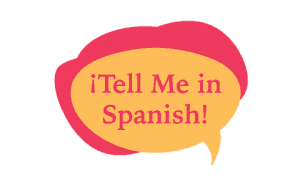Talking about wishes we had or dreaming about what we’d do if our circumstances were different is something many, if not all of us, do. These are some of the things the imperfect subjunctive...
Archives: Blog
With 548 million speakers, Spanish is the fourth most spoken language in the world. If you’re interested in learning this language, on this Spanish for beginners page, you’ll find free resources...
The indicative and subjunctive moods are an essential part of Spanish grammar. Understanding them is crucial because they allow you to talk about actions from different perspectives. So, in this...
Whether you’re a tourist or live in a Spanish-speaking country, giving and asking directions in Spanish is a basic skill that can come in handy. So, in this guide, you’ll find the top words,...
Knowing basic Spanish questions is an essential skill for effective communication. As a result, I’ve compiled a list of questions you can use in everyday situations. From essential contexts to...
Knowing words for food in Spanish can be extremely useful for your conversations. Whether you’re at a restaurant or talking about what you like to eat, this vocabulary is applied in daily life...
If you’re beginner or want to sound more natural, in this article, you’ll find some common Spanish phrases that can help you get around in daily situations and engage in simple conversations....
Spanish prepositions of place convey precise information about where something or someone is located. Since this type of information is often used in daily interactions, you’ll learn how and when...
Knowing basic Spanish words can help you build a solid foundation to understand and communicate in different scenarios since daily conversations rely on essential vocabulary. In fact, many of these...
As two of the most important verbs in Spanish, understanding the difference between ser and estar is crucial since they allow you to convey basic yet important information. So, the goal of this ser...
Spanish prepositions are essential words that connect nouns or pronouns with other elements while expressing location, time, direction, and more. In short, prepositions are the glue that holds your...
Por vs para is a topic that holds a place of honor among all Spanish tricky words. Confusing these basic prepositions can hurt your fluency and, in some cases, affect the meaning of your sentence....
De is one of the most frequently used prepositions in Spanish since it allows you to express ownership, relationships, and where someone or something is from, among other things. Seeing that its uses...
Have you ever wondered why some Spanish sentences have an extra a before people or pets and why this word has no English translation? Even though it’s never translated, the personal a in Spanish is...
The Spanish subjunctive mood is crucial for delivering messages as simple as wishing a person a good day or giving advice. In short, this verb mood is fundamental to understanding and communicating...
Whether you’re about to start your learning journey or are an experienced learner, understanding the different levels of Spanish proficiency is essential. So, in this article, we’ll explore the...
The sound of the Spanish letter j can be challenging for many learners since its pronunciation differs from English. Since most beginners wonder how to say j in Spanish correctly, in this guide,...
Regardless of your reasons to learn Spanish, there’s no doubt that, at some point, you’ll interact with native speakers. At that point, knowing some common Spanish terms of endearment can help...
The letter y in Spanish has two different sounds depending on whether vowels follow it and its position within the word. Because of this, many learners wonder how to pronounce y in...
When you start to learn Spanish, it’s helpful to focus on acquiring basic vocabulary that allows you to hold simple conversations. Since clothing and accessories are part of our daily routine, in...
The letter h in Spanish is used in many basic words and verbs. As a result, you should get familiar with its different sounds. In this pronunciation guide, we’ll explore how to say h in Spanish...
The Spanish double ll sound is used in many basic verbs and words. As a result, mastering its pronunciation is key to your speaking skills. Since the double l has a different sound in English, many...
Being able to ask questions in Spanish is an essential and fundamental skill that can be handy in everyday situations. As a result, in this guide, you’ll learn the word order, elements, and rules...
When learning to conjugate verbs, you must be aware of Spanish irregular verbs. In fact, many of the most common verbs in Spanish are irregular. So, in this guide, you’ll learn all the key...
Verb mood in Spanish allows you to convey your perspective about the information you share. In short, understanding how Spanish moods work is crucial to accurately expressing ideas and conveying...
